Introduction to the HubSpot Connector Tool
What is the HubSpot Connector Tool?
The HubSpot Connector Tool provides BPA Platform with easy-to-use connectivity to and from a HubSpot company database.
All communications use XML. You use the data integration tool to map BPA Platform data to HubSpot objects and operations. Operations such as, ADD, UPDATE, GET, and DELETE, are supported for a variety of business objects, such as, Sales and Contacts — for a detailed list, see SUPPORTED OBJECTS
The XML responses received back from the HubSpot API can be saved to file or passed to another BPA Platform tool for further processing. The responses can include details of the object requested, any errors from the provider, or the values of any automatically generated ID fields. For example, you can use HubSpot Integration to provide an indirect link between systems that do not typically synchronise data with each other, such as synchronising products from HubSpot to an e-commerce platform, or even to provide reports containing data from both systems.
The HubSpot Connector Tool Pack
The HubSpot integration tool pack consists of:
- HubSpot Integration — The HubSpot Integration tool must be installed on the BPA Platform server, and on any BPA Platform client machines. It is this that provides the translation between BPA Platform data and the HubSpot object and operation.
System Requirements
The HubSpot Integration tool requires BPA Platform 4.6 (build 1944) or above.
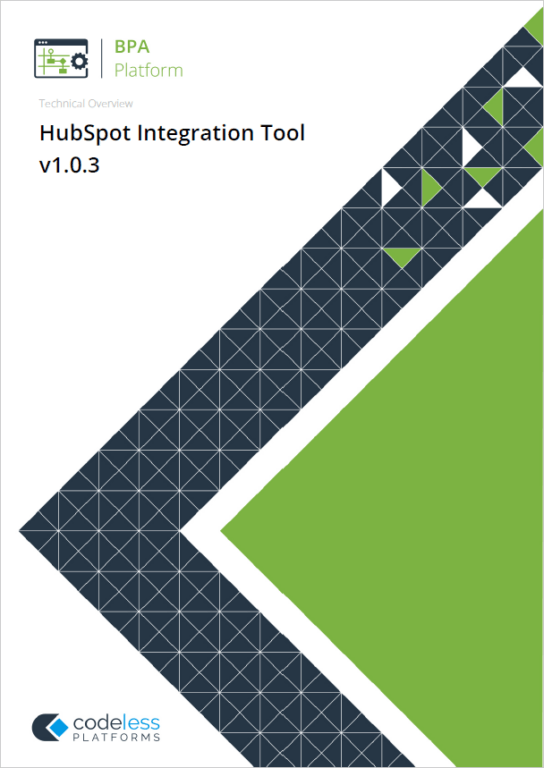
White Paper - HubSpot Integration Tool v1.0.3
All communications use XML.
Architecture
The diagram below provides a high-level system architecture overview of the HubSpot Integration tool pack, with BPA Platform and the HubSpot REST API:
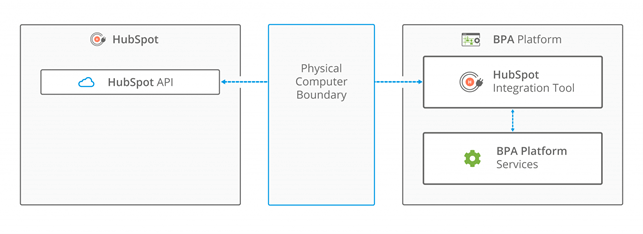
Figure 1— High-level system architecture of the HubSpot Integration
About the HubSpot Connector Tool
Global Configuration
The global configuration for this tool is used to create connections to HubSpot.
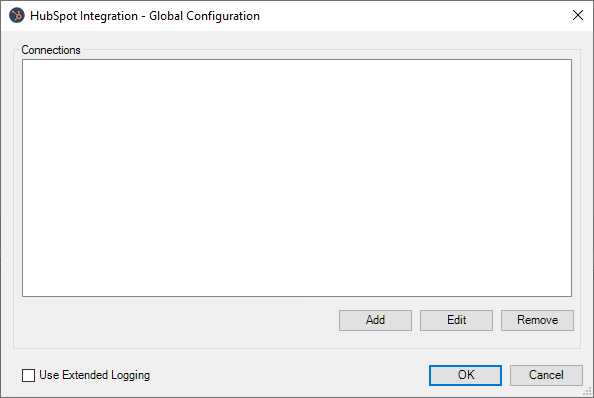
Figure 2 — HubSpot Integration – Global Configuration dialog
Click Add to create a connection to HubSpot.
Use Extended Logging
Selecting this option exposes the full XML parsed between the HubSpot Integration tool and the HubSpot API.
Without extended logging, the Event Log only contains start and end of transaction messages, plus any error messages encountered at runtime.
You can view the extended log in the BPA Platform Event Log (Tasks toolbar > Event Log ).
TIP: The Event Log database table may grow substantially large as extended logging adds additional rows for each call made to and from the Connector. To manage this, adjust the maintenance routine for the Event Log — refer to the BPA Platform product help.
HubSpot Connection Tab
You configure the connection to HubSpot here.
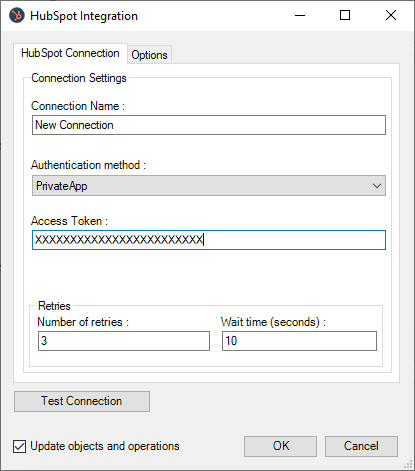
Figure 3 — HubSpot Integration – HubSpot Connection Tab
Enter a meaningful Connection Name for this connection; this is the name displayed when adding tasks for HubSpot.
Enter the PrivateApp Access Token to allow access through HubSpot’s API.
Configuring Connection Retries
Number of retries – Specifies the number of retries that will be attempted to establish a connection with the HubSpot upon a failure to connect.
Wait time (seconds) – On connection failure, the pause period, in seconds, before a further attempt is made to establish a connection with the HubSpot.
Options Tab
Select the required Module to be use for this connection. When no module is selected here, all objects are made available within the Tool step, see MAPPING TAB.

Figure 4 — HubSpot Integration – Options tab
Review Custom Properties
The Custom properties panel allows you to view custom properties previously defined on HubSpot’s CRM platform.
Test Connection
Using the Test Connection button allows you to test the connection to the HubSpot API.
Update Objects and Operations
Enabling the Update objects and operations option, allows the HubSpot Integration schema within BPA Platform to be refreshed.
If you have installed an updated version of the HubSpot Integration tool which comes with new objects and operations, you must refresh the connection’s schema for these updates to be made available within an existing connection.
Step Configuration
When creating new tasks, the HubSpot Integration tool is located under Data Connectors in the Tools Browser.
General Tab

Figure 5 — HubSpot Integration – General tab
Provide a meaningful Name and Description for this step.
Choose your Data source. This can either be:
- No data source — If you don’t make use of a dedicated XML input source, select this option to use BPA Platform variables in place of the XML objects’ fields. These can then be mapped to operational fields — see MAPPING TAB.
For example, you can extract various bits of information from an email and store them in BPA Platform variables. Then, having mapped them to HubSpot objects and operations, these can be stored in HubSpot for later use. - Task step — The data source can be set to an available BPA Platform XML data source. Only those steps that are capable of natively exposing an XML document at runtime are listed. These may be another HubSpot Integration step, or a tool, such as Convert Recordset to XML.
- Custom schema — An XML schema defines the structure of the parsed XML: what tags are present, and the nesting of the tags. You Define the schema of the XML that will be used as the input data source for this step. The industry standard XSD format is used by the HubSpot Integration tool. Any XML processed by this step must conform to this schema else an error will be reported.
If the XSD schema is available, either import it into the Custom Schema Configuration (use the Import XSD/XML File button) or copy and paste it into the configuration box.
If the XSD schema is not available, you can import an example of the runtime XML (Import XSD/XML File) or copy and paste it into the configuration box. Use the Parse button to create the schema.- Input source variable — As well as defining the schema, you must specify the BPA Platform variable that contains the XML data at runtime.
Connection Tab
You specify the HubSpot Connection this step must use.

Figure 6 — HubSpot Integration – Connection tab
All connections created in GLOBAL CONFIGURATION are presented here.
Alternatively, you can use a BPA Platform variable to create a dynamic connection, where the connection used is determined by runtime circumstances. At runtime, the contents of the variable must match the name of one of the GLOBAL CONFIGURATION connections — this is case-sensitive.
Mapping Tab
Here you define links between the incoming XML and the outgoing data that is sent to the HubSpot API. This defines how, at runtime, the incoming XML is to be translated into the XML required for the relevant object and operation.
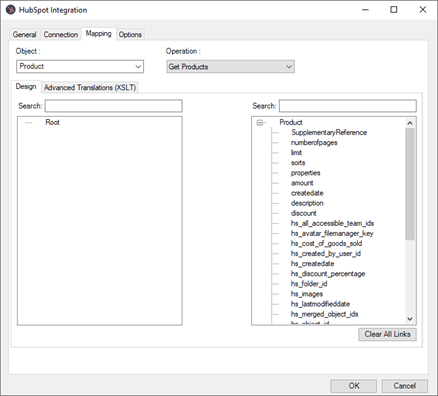
Figure 7 — HubSpot Integration – Mapping tab
The Object drop-down shows the available objects. The Operation drop-down shows the operations available for the selected Object. For more information about which operation is available for an object, see SUPPORTED OBJECTS.
Create links by dragging and dropping a data source field (left) onto its corresponding HubSpot Integration input field (right). Note that only linked fields are used in the output XML. BPA Platform formulas and variables can be included in the source data — drag them from the BPA Platform Browser to the object’s XML tree control. These can then be linked to operation fields. Note that BPA Platform recordsets must first be converted to XML using either the Convert Recordset to XML or Transform Data tool before they can be used here.
Each operation has an additional field, SupplementaryReference, which allows for traceability when transferring data from one place to another. When mapped, the data resides locally at runtime. It is added to the output and creates a record for reference purposes only — you can choose to map any field to SupplementaryReference to assist with checking where the data originated from or at what time the data transfer occurred, for example.
The HubSpot Integration tool uses eXtensible Stylesheet Language Transformations (XSLT) to translate the received XML. The Advanced Translations (XSLT) tab shows the XSLT generated for the links created for the object and operation. Use Enable Free Type Mode to directly edit the XSLT — this is particularly useful when translating a nonstandard requirement.
Options Tab
The Options tab allows you to define how errors in this step are handled at task runtime.
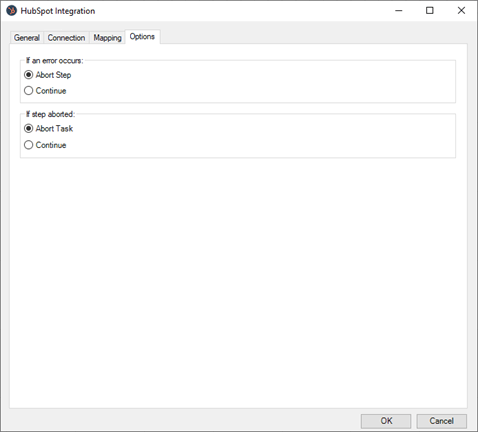
Figure 8 — HubSpot Integration – Options tab
If an error occurs, you can decide whether the step should Continue processing, or terminate the step immediately (Abort Step).
If the step is aborted, you can choose to Continue processing onto the next step in the task or terminate the whole task immediately (Abort Task).
Allowing the task to continue allows you to use the error XML received back from HubSpot Integration in a Save File step for investigation purposes, for example.
All errors are recorded to the BPA Platform Event Log (Manage > Event Log).
Working with Other Tools
HubSpot Integration can directly interact with the following tools:
Consuming XML from Other Tools
The HubSpot Integration tool can consume XML outputted by the following tools:
| Step Icon | Name | Step Type |
|---|---|---|
| Import Flat File | Input | |
| Import XML Document | Input | |
| Convert Recordset to XML | Format | |
| Transform Data | Format | |
| Call Task | Execute | |
| Web Service Connector Tool | Data Connectors | |
| HubSpot Integration | Data Connectors |
Exposing XML to Other Tools
The XML outputted by the HubSpot Integration tool can be used by the following tools:
| Step Icon | Name | Step Type |
|---|---|---|
| Convert XML to Recordset | Format | |
| Run Microsoft Reporting Services | Format | |
| Transform Data | Format | |
| Save File | Output | |
| Call Task | Execute | |
| Web Service Connector Tool | Data Connectors | |
| HubSpot Integration | Data Connectors |
XML Output
The HubSpot Integration tool outputs two documents:
OutputDataErrorData
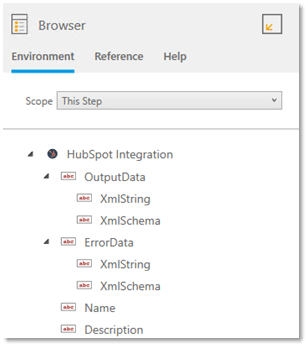
Figure 9 — HubSpot Integration tool outputs
Both outputs can be used:
- Directly by subsequent tool steps which consume XML data inputs
- If required, use the Convert XML to Recordset tool to convert the XML to a BPA Platform recordset
- Accessed using the output or error objects for response data (
XmlString), or the output or error schema (XmlSchema) present in the Task Browser
OutputData XML
The OutputData XmlString object contains:
- Data returned from HubSpot Integration, for instance the created, updated or retrieved entity instances
SupplementaryReference
ErrorData XML
The ErrorData XmlString object is structured as follows:
<Error> — All errors are created as an <Error> node, with the following sub-nodes:
<Object> — The name of the requested object, such as, Product
<CODE> — The error code returned by HubSpot
<MESSAGE> — The corresponding error message
<EXTENDEDINFO> — A string containing additional information about the error
<INPUTDATA> — The input data mapped for the object, plus all data contained in the SupplementaryReference field
Supported Objects
At the time of writing, the following objects and operations are supported:
| Module | HubSpot Object | Standard Operations | Comment | ||||
|---|---|---|---|---|---|---|---|
| Get | Add | Update | Delete | Other | |||
| Contacts: | Company | ||||||
| Company | |||||||
| Metadata: | Property | Additional supported operations:
| |||||
| Sales: | Deal | ||||||
| Line Item | |||||||
| Product | |||||||
| Quote | |||||||
Runtime
The incoming XML is translated into the XML format for the object and operation selected in the configuration. The data for the linked fields is brought across into the output XML — only those fields that were linked are brought across. The XML is passed to the connector tool, which then:
- Processes the data
- Performs the operation requested
- Sends back an XML document containing the response
The XML can then be used by other BPA Platform steps.
Error Handling
Errors are written to the BPA Platform Event Log (Manage > Event Log). You define how errors are handled in the Options tab of the HubSpot Integration tool — see OPTIONS TAB.
Reasons for the errors could include:
- Web service connection errors
- User privilege errors
- Errors from the HubSpot API (see XML OUTPUT)
- Warnings and messages from the HubSpot API (see XML OUTPUT)
HubSpot Account Security
The HubSpot API is the only method used to connect to HubSpot and perform read / write tasks — all security present in the API is used.